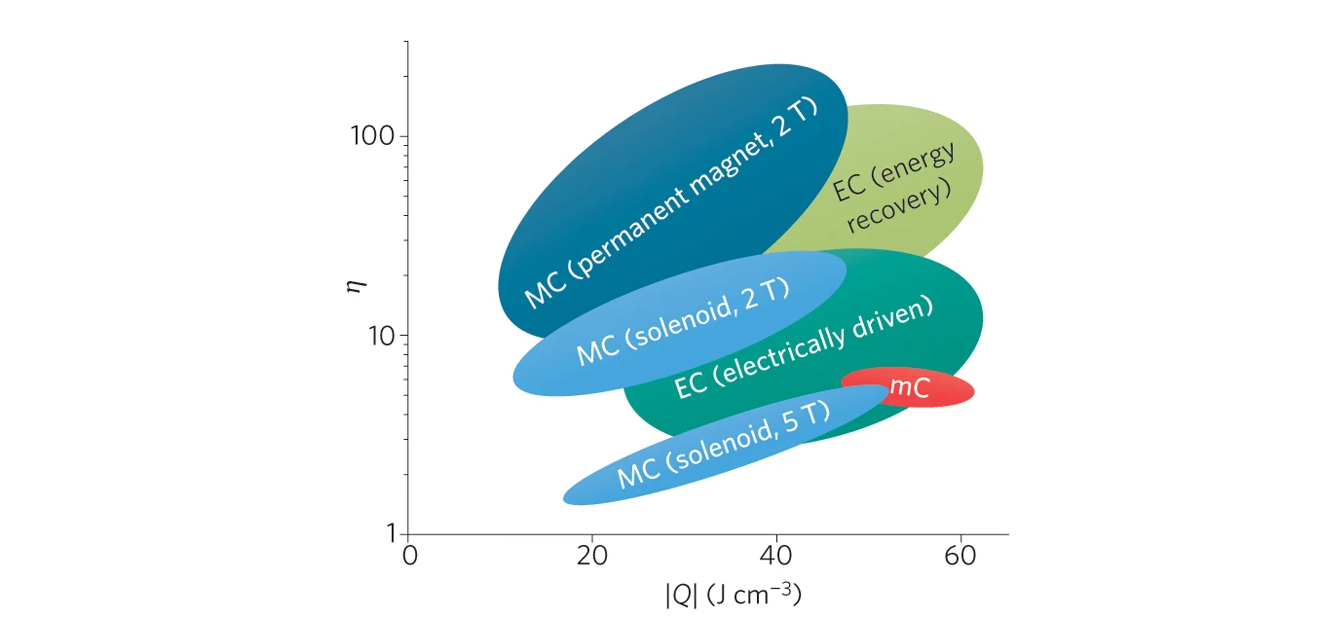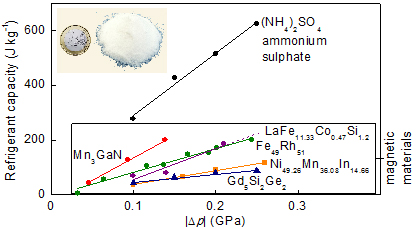
Electrocalorics
Applying a voltage across a ferroelectric material can switch ferroelectric domains below the Curie temperature, but near the Curie temperature an applied voltage can drive the ferroelectric phase transition itself. Driving and undriving such phase transitions produces large thermal changes known as electrocaloric effects, and these could be exploited for low‑power cooling applications. Here we study a range of electrocaloric materials, using a range of measurement protocols, in this rapidly growing area.
The image above shows the energy efficiency η (described as the heat transferred Q divided by the external work W) for electrocaloric (EC), magnetocaloric (MC) and mechanocaloric (mC) effects. [After Nature Physics 11 (2015) 202].
 Mechanocalorics
Mechanocalorics
Mechanocaloric effects arise in materials when changes in applied stress produce thermal changes. Giant mechanocaloric effects have therefore been suggested for cooling applications that are environmentally friendly and energy efficient. We study a range of elastocaloric materials driven by uniaxial stress, and a range of barocaloric materials driven by hydrostatic pressure, using a range of measurement techniques, in this nascent research area.
The image to the left shows refrigerant capacity of giant barocaloric materials at different values of applied pressure change |∆p|. [After Nature Communications 6, (2015) 8801].
